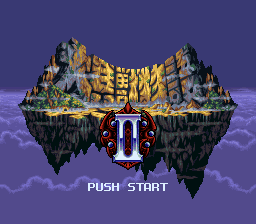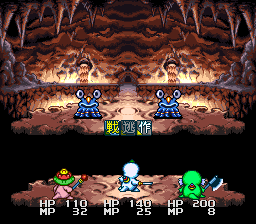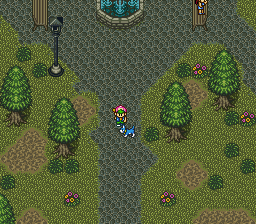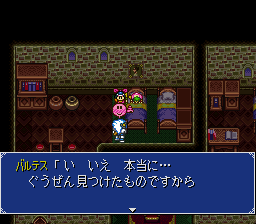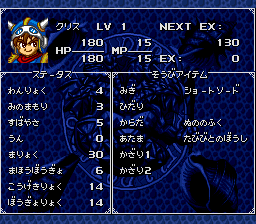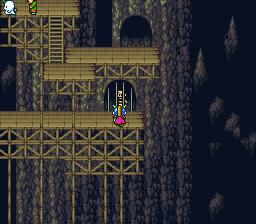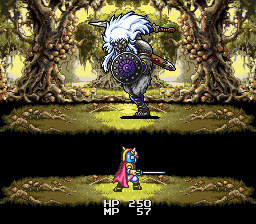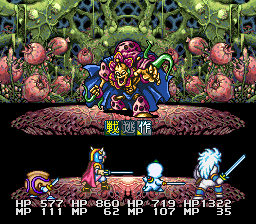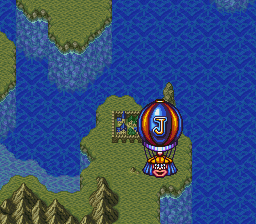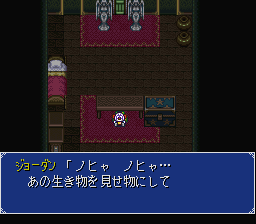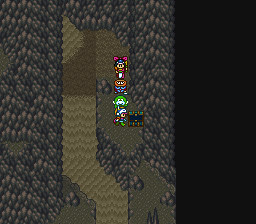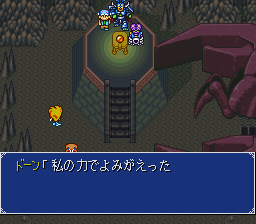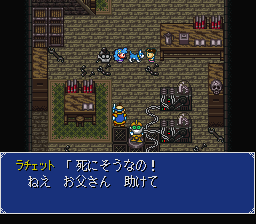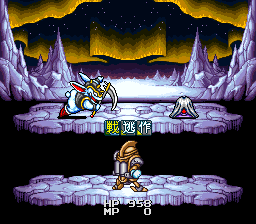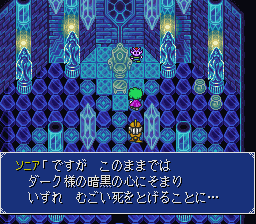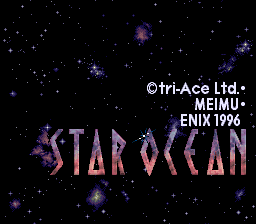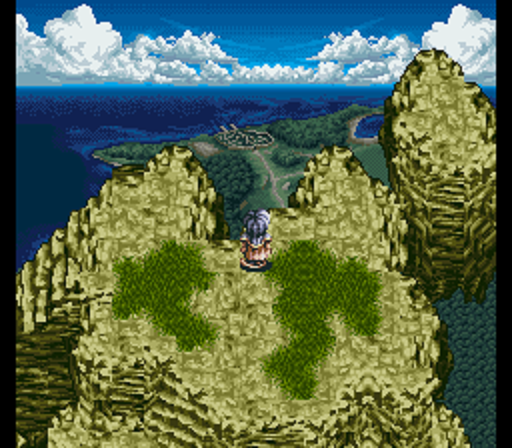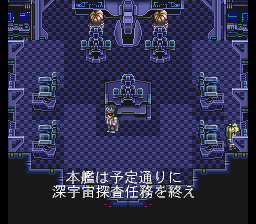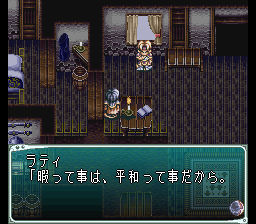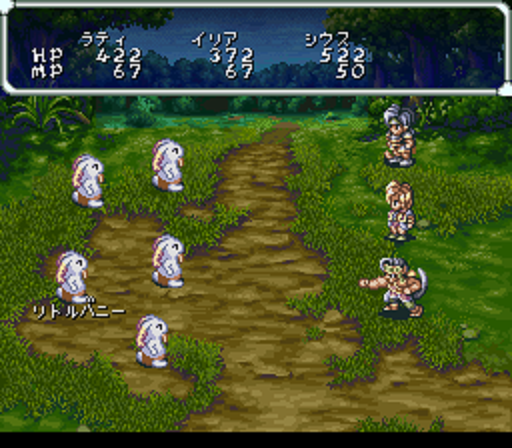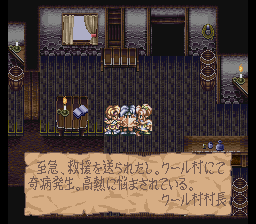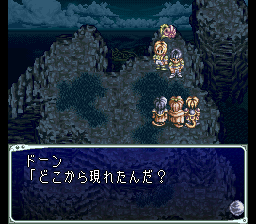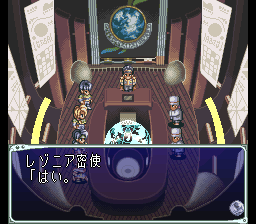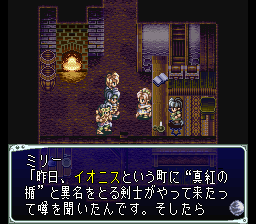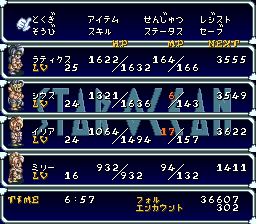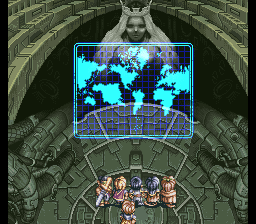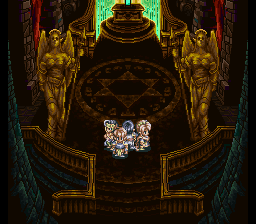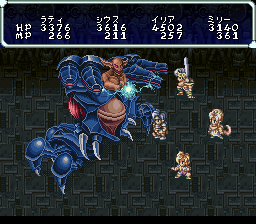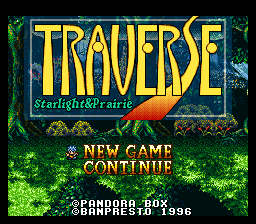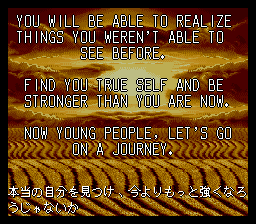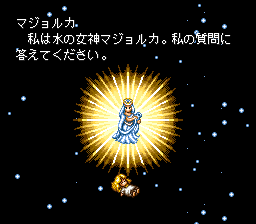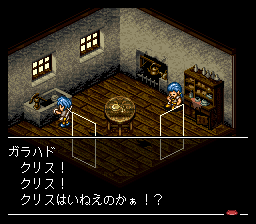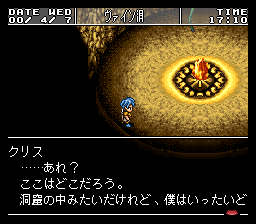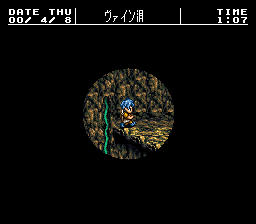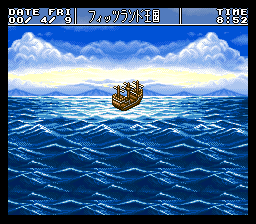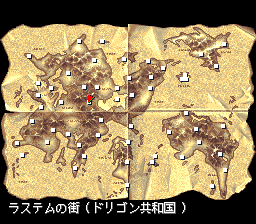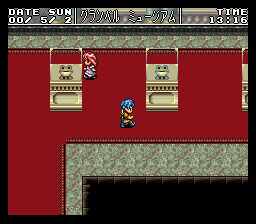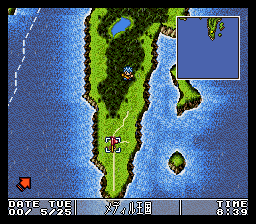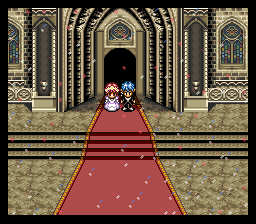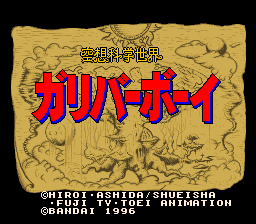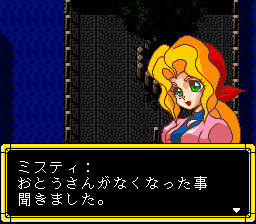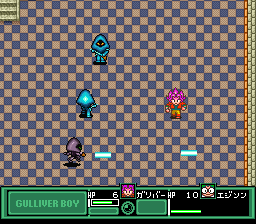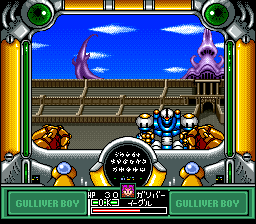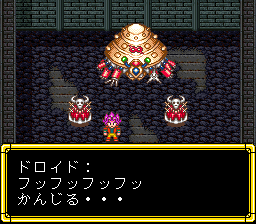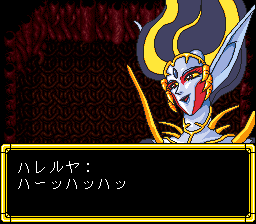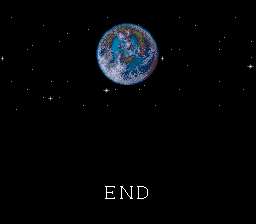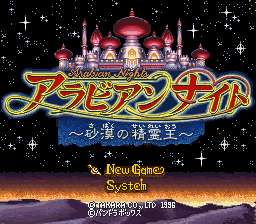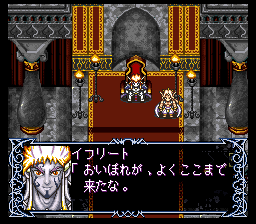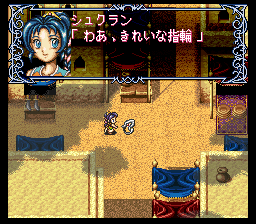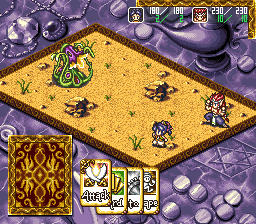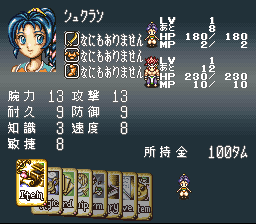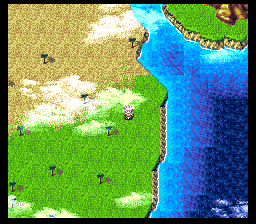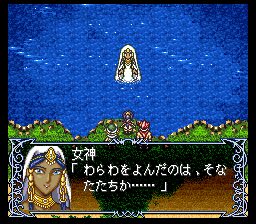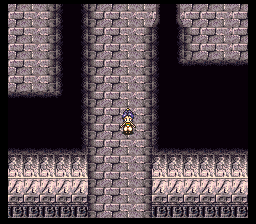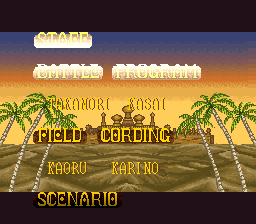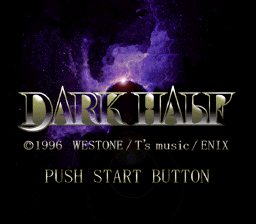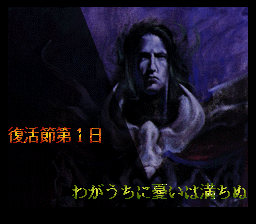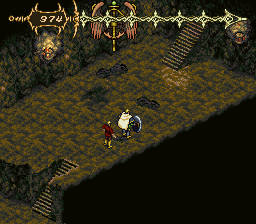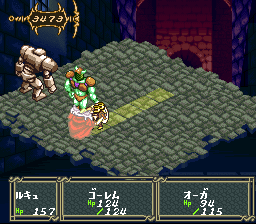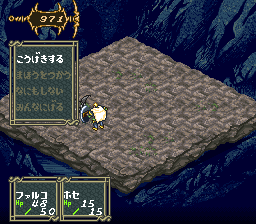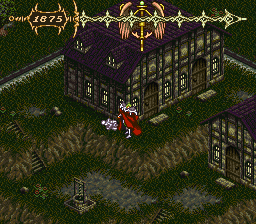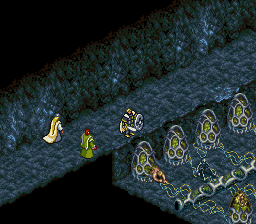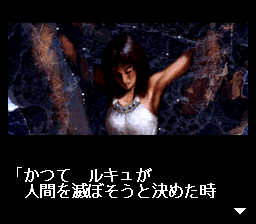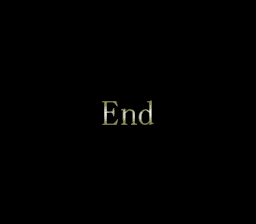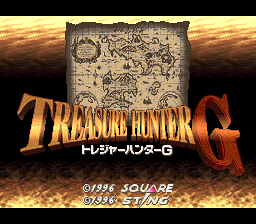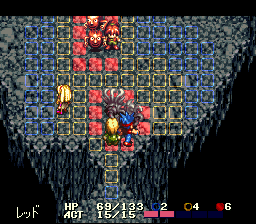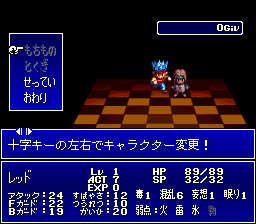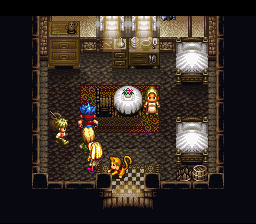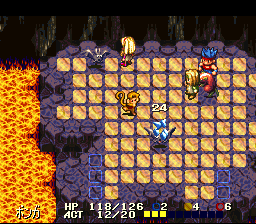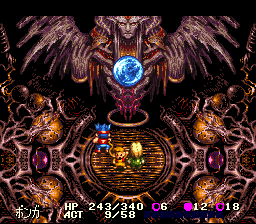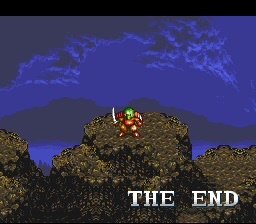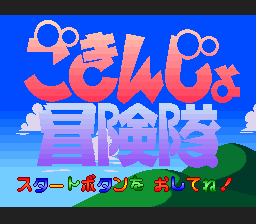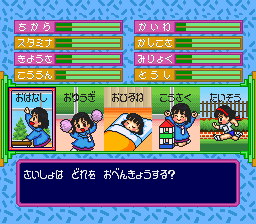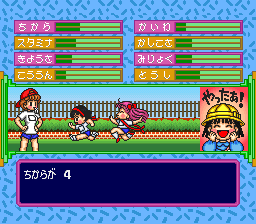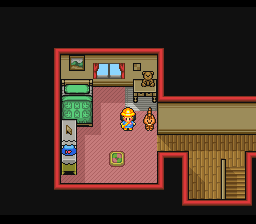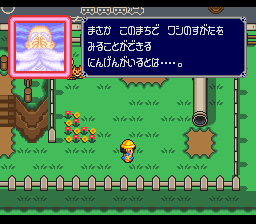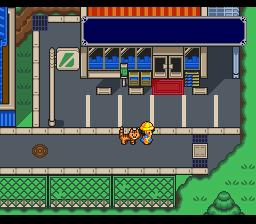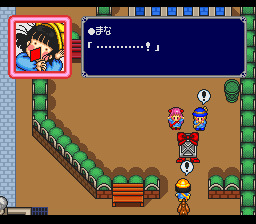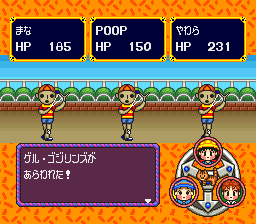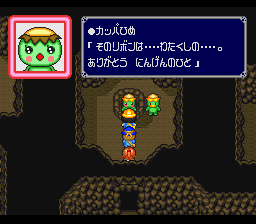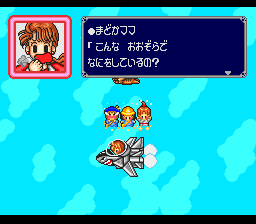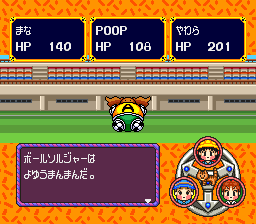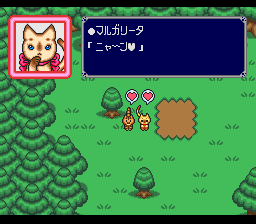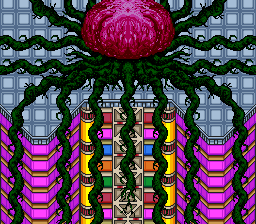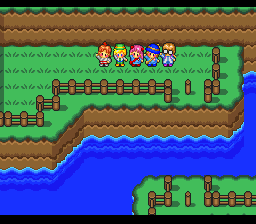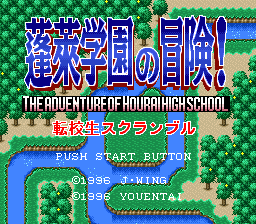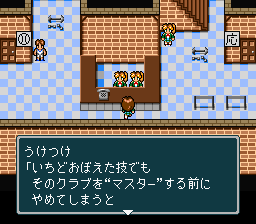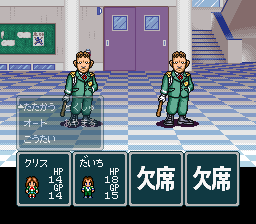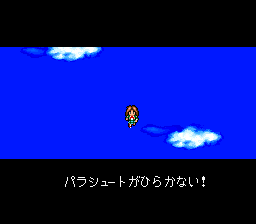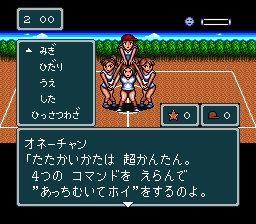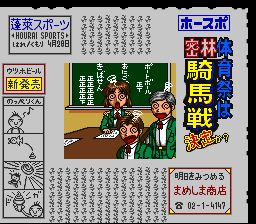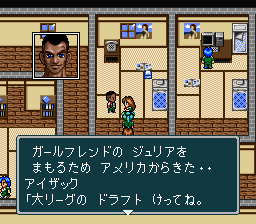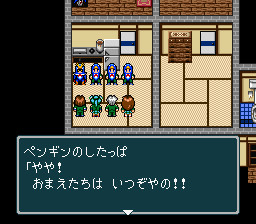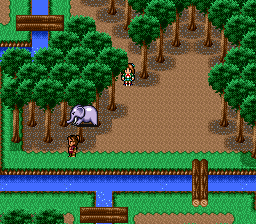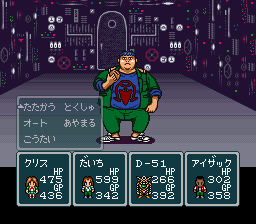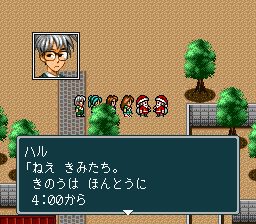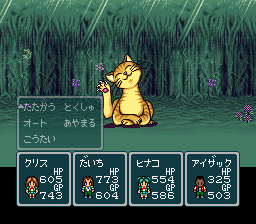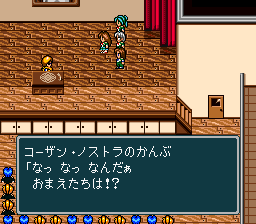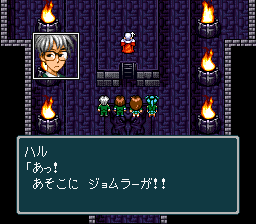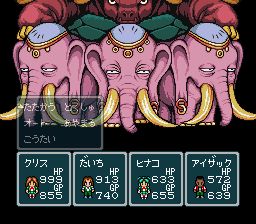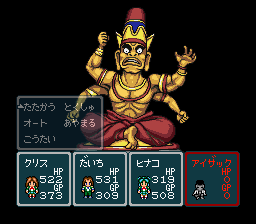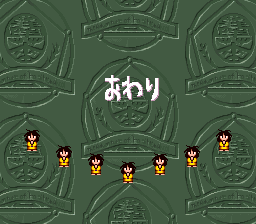At this point we have all the party members (the first four were my endgame party):
- Kurisu, the hero of the fire shell and main character — you have to use him. He can cast fire spells and do sword techniques.
- Shamuru, a catwoman thief. She can steal things which is nice, but can also use some helpful spells, particularly Powered (attack up). She is also important for one point where you can do some nice levelling.
- Kupikupi, who has the best healing spells. By the end of the game he can cast a full party heal spell and a full party “restore conditions” spell for fairly cheap, and can contribute some attack spells as well if necessary.
- Millie, the robot (who used to be your dog). Strong attacks, and also nice all-attack abilities that involve various elements.
- Pot, who was also in the first game. Has a number of summon spells that you gain from various events — unfortunately a few of the best ones are only available with the real-time clock system (I had the same problem that I did in Tengai Makyo Zero where the clock never synced or advanced when I wasn’t playing).
- Baboo, who uses boomerangs. I didn’t use him much.
- Baltes, the warrior. I also didn’t use him much.
- Poyon, who learns spells from enemies like Blue Magic. I barely used him.
- Ruimella, who has decent healing and support spells. I used her some but I generally found Kupikupi to be more useful.
- Gabro, who joins fairly late and as such I didn’t use him much. He seems like he could be useful with some elemental powers.
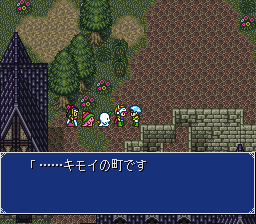
Next up is “kimoi” town, where the townpeople’s souls are being extracted by Jarama (who of course is being controlled by the evil Dark people). To clear this part we have to bring a certain kind of water to a holy spring, and the god then allows us to enter the realm of the dead as spirits so that we can clear out the monsters.
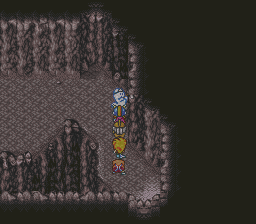
Beyond the mountain there is a creepy bone dungeon.
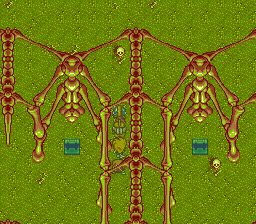
And finally we defeat the Phantom Queen (one of Dark’s underlings), and recover the 5th aura stone along with freeing Jarama. She can stop random encounters but only once, for a short time, recharged when you stay at an inn. So pretty much useless.
The final aura stone is in a mechanical fish in the sea.
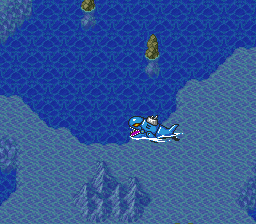
This is an annoying dungeon because the visibility is very poor, and of course you are facing encounters every 4 steps. But in the end we recover the sixth aura stone, although then Dark tries to kill us in the sea monster. We rush to an escape capsule, but are now stranded in the sea.
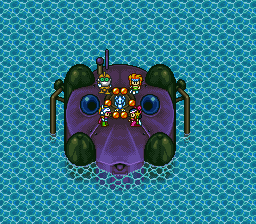
Fortunately our small dragon comes to save us, and with the six aura stones he is able to power up into a full size dragon that can be flown around the world. At this point, you can go to the snowy islands at the top of the map where you encounter two sets of enemies that give huge amounts of XP and gold. In a fairly short time I was able to get as much money as I needed for the rest of the game, level up to the high 30s, and steal “Angel Medals” which offer a huge increase to attack and defense. This allowed me to keep the “no encounter” code on for the rest of the game and still manage to beat all the bosses. (However, this area is only available at this short window)
Now we have to fly up to the castle in the sky, where the heroes display their usual stupidity and give the aura stones to the queen, who turns out to be a clone made by Dr. Doan (Dark’s servant).
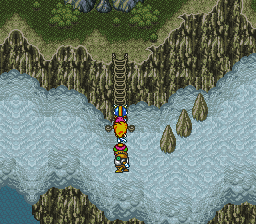
Now we rush to the temple in the sky land to stop Dark from using the aura stones, but of course we’re too late — once we arrive Dark destroys us with one hit and then activates the aura stones to capture power for himself.
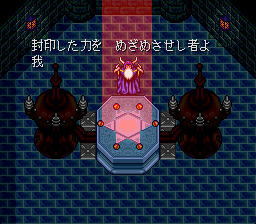
Dark activates the stones, making the sky land crash to the ground and doing huge damage to the land. Many towns are displaced or destroyed. In this section of the game you are basically trying to recover your team members, find the 4 shells (which were lost during the crash), and also free the Dragon so that we can fly up to Dark’s lair.
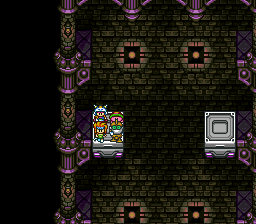
Once this is done, it’s time for the final dungeon. You have to use two parties here, switching back and forth with the Y button to open up new areas until both of your parties arrive at the top. Then your B party stays back to fight Beauty (the last of Dark’s underlings) while the A party with Kurisu goes for Dark.
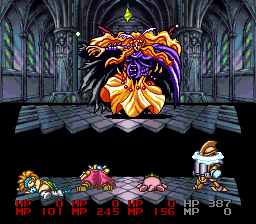
Beauty is the hardest fight in the game — she uses a move almost every turn that has a chance of confusing everyone, and then your party members kill each other. Even using the cure-all spell of Kupikupi it’s hard to avoid this. Fortunately if you lose with your B party, the A party takes her on instead. Even so I had to try 6 times before I could get enough luck to defeat her.
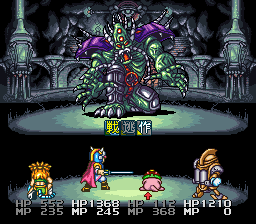
Dark’s three forms, by contrast, are a cakewalk. Kupikupi can just Sun Shower every turn to fully restore HP, Robot can exploit elemental weaknesses, Kurisu attacks, and Shamuru supports.
Afterwards, Kurisu has to go back to Earth (leaving Millie behind since she’s a robot now), and everyone else goes back to their lives.
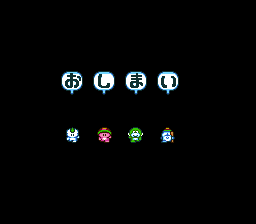
Overall this game is OK. The random encounter rate is a serious problem — if someone could develop a code that halves the encounter rate that would improve this game immensely. The storyline is acceptable but relies on a lot of cliches (particularly the “haha, the heroes are too weak to deserve to fight me! Here is my underling to fight” and “there’s no way the heroes survived that, they must be dead.”)
We’re down to 10 games (9 sfc and 1 PC-engine)!
